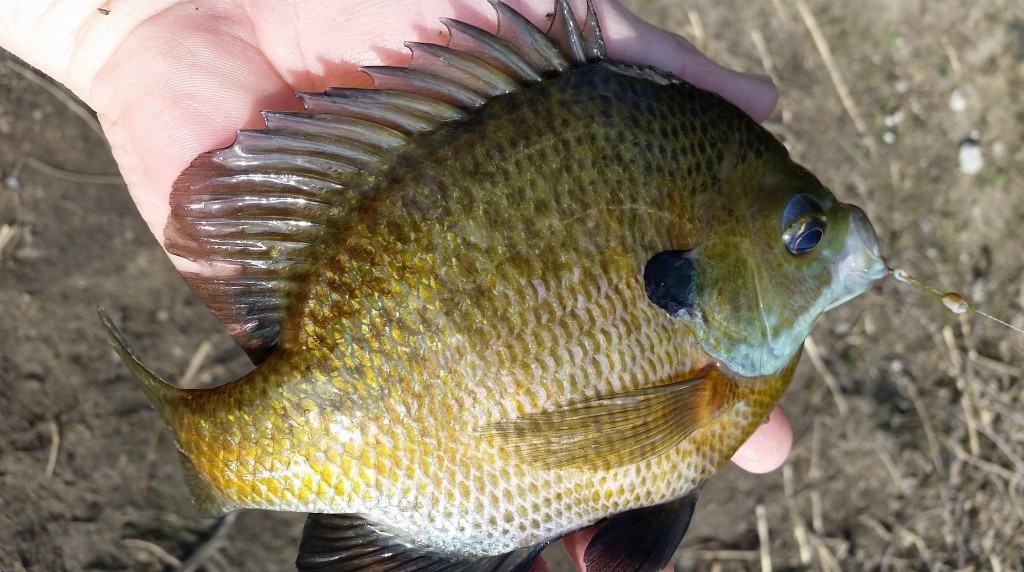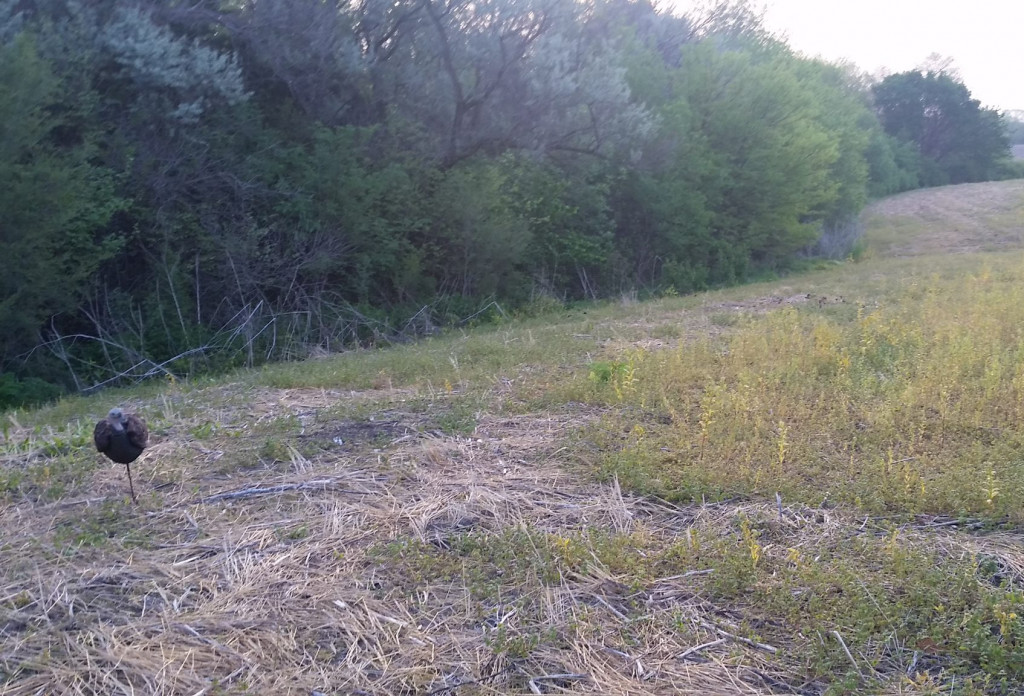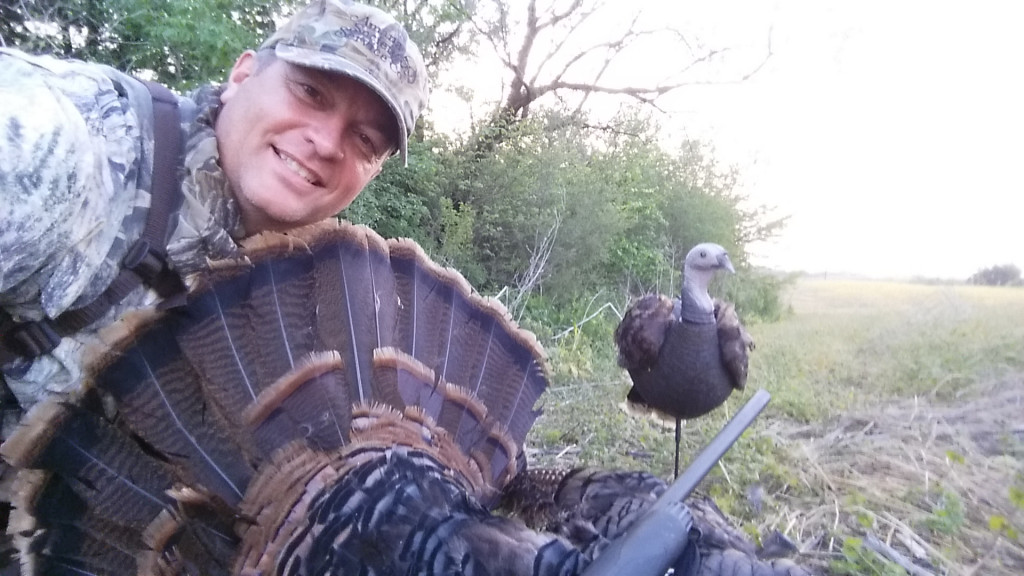
Feeling the need to be outdoors I opted to try my luck on some panfish for a couple evenings this past week. The first night as I left the lake I had to pump the breaks to allow a tom turkey to get across the road ahead of me. His thick, beard nearly sweeping the ground in front of him. After fishing the second evening I spotted the same gobbler (I assume) in pretty much the same spot. He was just a little further into the field. I was seeing a potential pattern for this bird.
Turkey hunters reading this know exactly where I meant to be the next morning. Because the bird was on public ground I had a plan, too. First, I gave myself plenty of time and darkness to cross the wide-open field that separated the parking area from my intended spot.

Next, was the use of a single, hen decoy. In this case it was the decoy we call “Feathers”. This time of year there are plenty of lone hens about. But more importantly this gal is covered in actual turkey feathers, giving her (and me) an advantage over the rubber and plastic fakes. I found a good patch of tall grass I could hide in, put Feathers in the short grass between me and the timbered edge that was 30 yards away.
About 20 minutes later his first gobble of the morning took me a bit by surprise. For sometime I had been listening to 3 or 4 others gobblers talking it up in the distance. But this one was close.
 The final, and toughest, part of my strategy was to restrict my calling to soft, subtle hen sounds. I like to call. I like to hear them gobble. But I figured he had heard plenty of hunters this spring calling loudly and often. I also feared that if I got him gobbling too much he would call himself in a hen. I didn’t need that kind of competition. (see Those Darned Hens)
The final, and toughest, part of my strategy was to restrict my calling to soft, subtle hen sounds. I like to call. I like to hear them gobble. But I figured he had heard plenty of hunters this spring calling loudly and often. I also feared that if I got him gobbling too much he would call himself in a hen. I didn’t need that kind of competition. (see Those Darned Hens)
After a couple more of his gobbles, I softly clucked a few times hoping to let the tom know I was nearby. He ignored it.
My attention was soon diverted to hen moving along the field edge, away from me and the gobbling tom. I made more soft hen music. The gobbler seemed to appreciate it this time and replied.
Then everything went quiet for several minutes. I was about to make some more quiet clucks and yelps when a very large, dark bird came flapping over the trees and landed in my field. It hit the ground with its feet already moving. Before I was able to ID the bird as gobbler or hen, it was out of view behind me. Was this my gobbling bird…was the gig up?
A muffled gobble in front of me put my fears to rest. He was now on the ground, too. Past experience has taught me that gobbles do not carry as far once that tom gets out of his roost, they are also don’t carry as far in the thicker vegetation of the late season. That gobble is rarely as far away as it sounds now.
The tom responded to my very soft purrs and clucks more regularly now, though he did not want to budge from his spot in the timber. The distance between us never seemed to change. Then it he went quiet…again.
My light calling was going unanswered. The thought to start getting more aggressive on the call crossed my mind. I resisted, but figured if I didn’t hear anything soon I had little to lose. Right then the big boy stepped out into the field.
Its now the middle of May. Making it officially the late-season for spring turkey hunting here in Nebraska. But rest assured there are still gobbles to be heard and birds to be worked. Your strategy may have to be adjusted, but some amazing hunts are still possible.
hershy
The post Success in Late Season appeared first on NEBRASKALand Magazine.
















